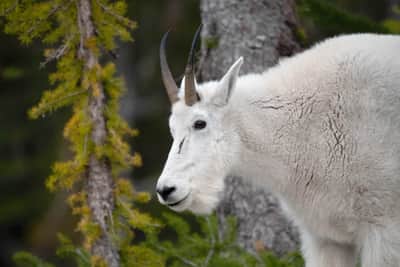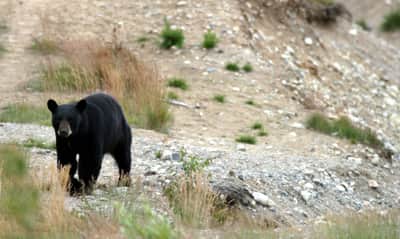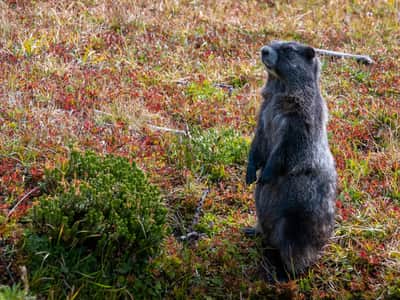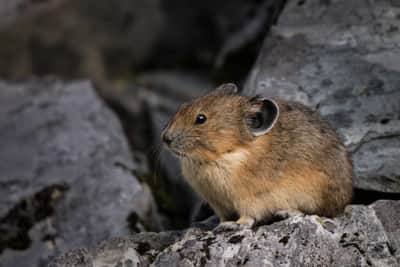Wildlife safety in the Enchantments
The Enchantments is home to all sorts of wild animals. Seeing these animals can be a highlight of your trip, but it’s important to keep plenty of distance between you and them. Wildlife is exactly that: wild. Interactions between humans and wild animals are almost always bad for the animals, and can sometimes put the humans in danger too. Here are some tips for dealing with animals you may encounter in the Enchantments.
Goats
The Enchantments is well-known for its majestic mountain goats. You’ll likely see these goats at some point during your visit. They can be found at all elevations.

Unfortunately, these animals are becoming increasingly habituated to the presense of humans. They will not be afraid of you, and may confront you. Though these animals may look similar to domestic goats, they are dangerous and should not be approached. In 2010, a hiker in Olympic National Park was killed by an aggressive mountain goat. Others have been seriously injured by goats.
Female mountain goats give birth to babies in May or June, so if you visit in the peak season you’re likely to see a mom and her kid traveling together. Mothers will aggressively defend their offspring, so keep your distance.
Bizarrely, mountain goats are drawn to human urine, which contains salt and minerals that are scarce in their environment. They can smell human pee from far away and will seek it out. To avoid a confrontation, don’t pee near the trail or near your campsite. You should assume that a goat will show up where you’re peeing, probably within a few hours. Plan to be far away from that spot by then. If possible, pee down into a crack between rocks or somewhere else that a goat won’t be able to reach. Don’t pee on vegitation, since goats will tear it out to get at your urine.
Try to keep 150 feet between you and any goats. If a goat begins to move in your direction, move out of the way. If it continues to approach you or follow you, stand your ground. Yell at it and wave your arms. If it’s not dissuaded by that, throw small rocks at or near it to scare it off.
Be especially careful around goats in the fall, which is their mating season. Male goats may be more aggressive during this time.
Bears
Black bears inhabit the Enchantments, but sightings are uncommon. Bears are mostly seen at lower elevations where the tree cover is more dense.

When hiking, be sure to talk or make noise regularly. Bears will hear you coming and move away—they don’t want to encounter you any more than you want to encounter them. Be careful not to accidentally sneak up on a bear; a surprised bear can be dangerous.
Bears will seek out human food by smell. To avoid an encounter, cook and eat at least 200 feet away from your campsite. Store your food in a bearproof container (such as a bear canister or bearproof sack), also at least 200′ from where you’ll be sleeping.
Small mammals
You’re likely to spot various kinds of small mammals during your visit to the Enchantments. These animals don’t generally pose any danger to humans. That said, keep a careful eye on your belongings if you put them down—rodents have been known to chew holes in backpacks to get at food stored inside.
Remember, never feed wild animals. If an animal approaches you, shoo it away.
Marmots
Marmots are a common sight in the alpine meadows of the Enchantments. They live in underground burrows and emerge to graze on plants.

Marmots are social animals and take it in turns to keep a lookout for predators while others forage. They communicate in shrill chirps that sound similar to a sequence of short blasts on a whistle.
Pikas
Pikas are small mammals with round bodies, short ears and no tail. They’re herbivores and are closely related to rabbits and hares. Keep an eye out for them darting around in boulder fields near or above the tree line.
